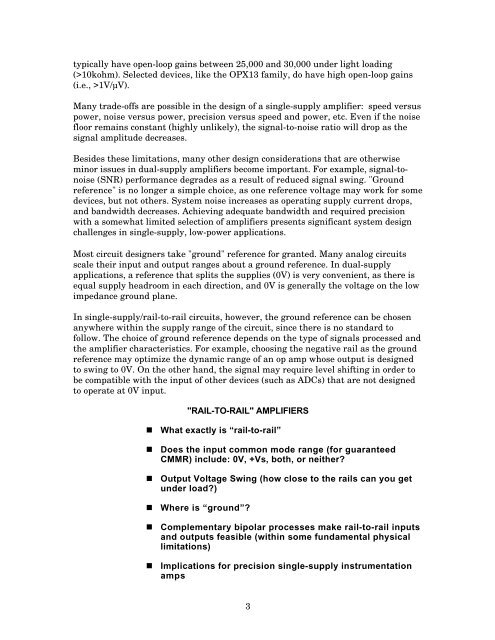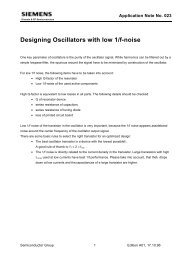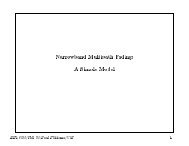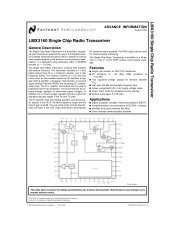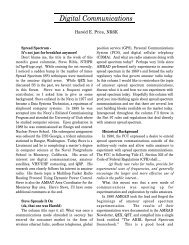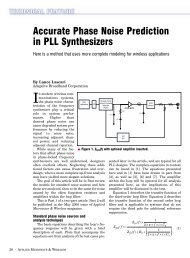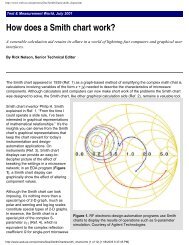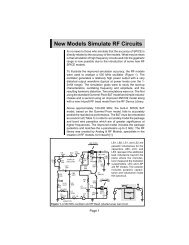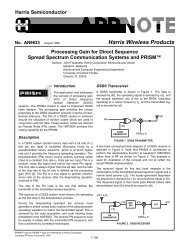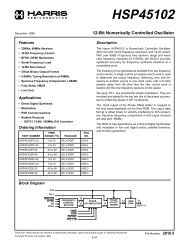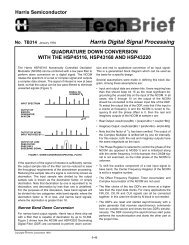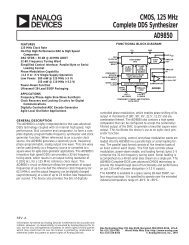SECTION 1 SINGLE-SUPPLY AMPLIFIERS - Analog Devices
SECTION 1 SINGLE-SUPPLY AMPLIFIERS - Analog Devices
SECTION 1 SINGLE-SUPPLY AMPLIFIERS - Analog Devices
- No tags were found...
You also want an ePaper? Increase the reach of your titles
YUMPU automatically turns print PDFs into web optimized ePapers that Google loves.
typically have open-loop gains between 25,000 and 30,000 under light loading(>10kohm). Selected devices, like the OPX13 family, do have high open-loop gains(i.e., >1V/µV).Many trade-offs are possible in the design of a single-supply amplifier: speed versuspower, noise versus power, precision versus speed and power, etc. Even if the noisefloor remains constant (highly unlikely), the signal-to-noise ratio will drop as thesignal amplitude decreases.Besides these limitations, many other design considerations that are otherwiseminor issues in dual-supply amplifiers become important. For example, signal-tonoise(SNR) performance degrades as a result of reduced signal swing. "Groundreference" is no longer a simple choice, as one reference voltage may work for somedevices, but not others. System noise increases as operating supply current drops,and bandwidth decreases. Achieving adequate bandwidth and required precisionwith a somewhat limited selection of amplifiers presents significant system designchallenges in single-supply, low-power applications.Most circuit designers take "ground" reference for granted. Many analog circuitsscale their input and output ranges about a ground reference. In dual-supplyapplications, a reference that splits the supplies (0V) is very convenient, as there isequal supply headroom in each direction, and 0V is generally the voltage on the lowimpedance ground plane.In single-supply/rail-to-rail circuits, however, the ground reference can be chosenanywhere within the supply range of the circuit, since there is no standard tofollow. The choice of ground reference depends on the type of signals processed andthe amplifier characteristics. For example, choosing the negative rail as the groundreference may optimize the dynamic range of an op amp whose output is designedto swing to 0V. On the other hand, the signal may require level shifting in order tobe compatible with the input of other devices (such as ADCs) that are not designedto operate at 0V input."RAIL-TO-RAIL" <strong>AMPLIFIERS</strong>What exactly is “rail-to-rail”Does the input common mode range (for guaranteedCMMR) include: 0V, +Vs, both, or neither?Output Voltage Swing (how close to the rails can you getunder load?)Where is “ground”?Complementary bipolar processes make rail-to-rail inputsand outputs feasible (within some fundamental physicallimitations)Implications for precision single-supply instrumentationamps3


